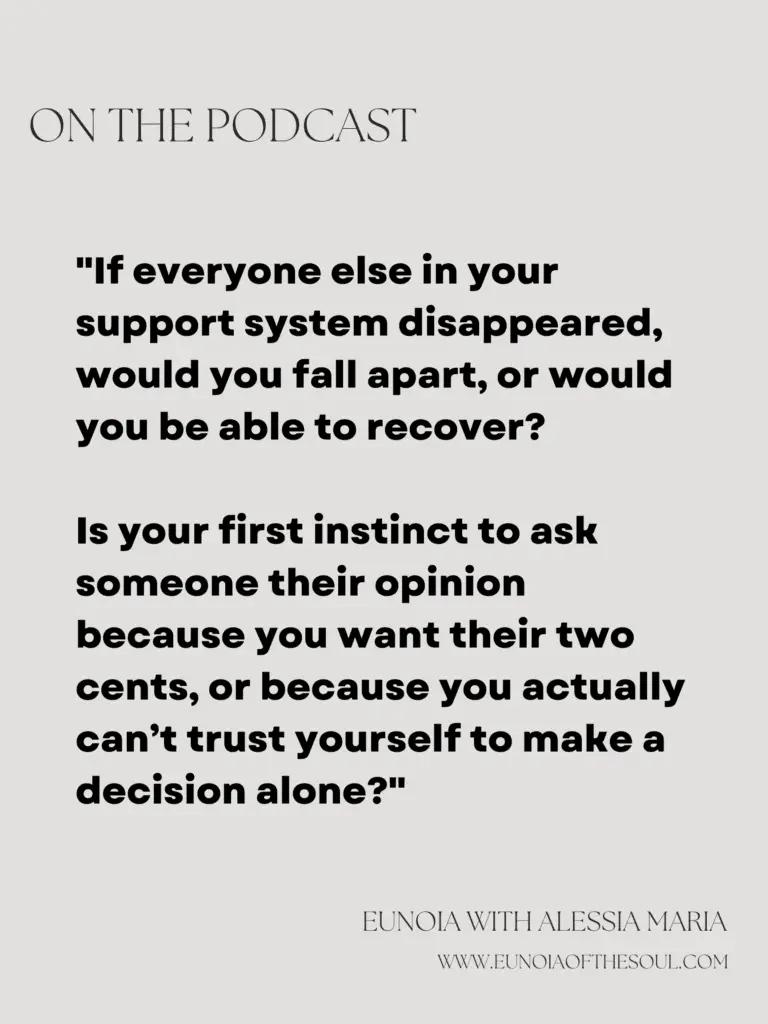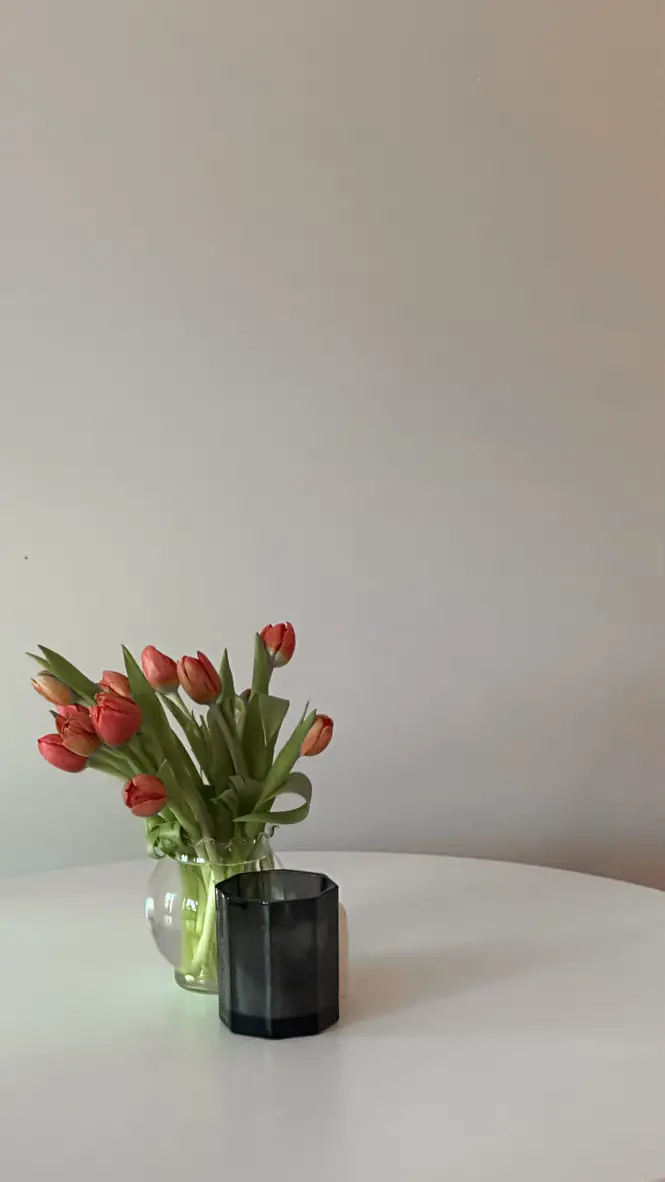Today on the podcast we’ve got a very highly requested topic- what is independence and a healthy attachment style in life?
What is Independence (and what isn’t)?
A lot of times when we think about independence, we think of things like being single, being financially independent, not needing any help from others, etc.
I respectfully disagree.
I was independent from a young age and I also had an incredible mom who was always there to support me. How could I have been super independent while also having someone that is really there to support me? Because I think we get the definition of independence wrong.
Independence doesn’t mean being on your own. It means being able to function and process without completely relying on others.
What is a healthy attachment style?
Sow do you have independence while also having a healthy attachment style? It’s a fine line and can get confusing.
There’s a common example of attachment in psychology that is seen in young children. Say there is a young child and their caregiver/parent in a room. When the caregiver leaves, how the child responds indicates their current attachment style. There are 3 main attachment styles: avoidant attachment, anxious attachment, and secure attachment.
Avoidant attachment: If the child doesn’t seem to care when the caregiver leaves. This means that the child does not seek comfort from their caregiver and when applied to adulthood, they don’t feel comfortable asking for support or help.
Anxious attachment: The child is distressed when the caregiver leaves and when the caregiver comes back, they are not reassured. They are still stressed and not recovering. In adulthood, this can lead to a need for constant reassurance, but often being unstable.
Secure attachment: The child is distressed when the caregiver leaves, and comfortable when the caregiver returns. This means that you are comfortable with the caregiver and you feel comfortable seeking support from others.
*Disclaimer: I’m not I am not a professional. Please do not use this as professional advice. This is just a foundational rule for understanding the attachment styles that I hope can help you understand the rest of what we’re talking about.
So, a healthy attachment style in adulthood is having the ability to live for yourself and be on your own while also knowing that it’s not black and white. You cannot be completely independent; asking for help is good as long as you don’t rely on others to solve your problems first. Indicators of a healthy attachment style often include having awareness of your feelings, having the ability to communicate these feelings, being able to work with other opinions and views, looking at multiple sides without feeling threatened, and enjoying the presence of someone or something, but knowing that you don’t need it to succeed or be happy or function.
What attachment style are you right now?
I have had moments in my life where I was in an anxious attachment style and felt like I needed constant reassurance. And in other moments where I was in the avoidant attachment, where I felt like I couldn’t ask anyone for help. It is common to go back and forth between these, so I built a question to ask yourself that may help you understand where you currently are.
If everyone else in your support system disappeared, would you fall apart, or would you eventually be able to recover, continue growing, and function? When you’re having difficult moments, is your first instinct to ask someone their opinion because you want their two cents, or is it because you actually can’t trust yourself to make a decision and you need them to do it for you?
This is a question I ask myself all the time. It can be a hard pill to swallow. When you are going through a difficult time, it is hard to process things alone, and is very common for you to enter an anxious attachment style. It is okay to ask for help! But when you expect others to solve it for you, that is where it becomes an issue.
becoming more independent
We talked about what independence is and we talked about how it’s not being completely on your own. And we also talked about attachment. So how do you put those two things together? Well, independence is not all or nothing. I am independent and things like supporting myself through groceries when I’m at school, setting up appointments, and my emotional processing (usually). I am dependent on things like financial stability and insurance, my phone plan, etc.
You can be independent in one aspect of life and dependent in others. In fact, I would actually go as far as saying that you cannot be one hundred percent independent
But how can you become more independent? A few things I have felt personally help:
- Set boundaries
- Spend more time with yourself
- Invest in a counselor
- Allow yourself to accept that growth is uncomfortable
Tune into the full episode to learn more of my tips for becoming more independent!
embrace the lonely moments
Being independent can be lonely, and I cannot deny that. That is one of the biggest things that I think people (myself included) get scared of when learning to take some boundaries.
Honestly, I don’t have the answers. I wish I did, but I’ve been learning that sometimes having difficult feelings is human. It does not mean that there’s a major problem, it means that you’re processing things. This is where personal development comes into play. I say in every episode- You are the foundation of how you process and do things. You are the one person that you can control.
I know independence is scary, but I also know that you can do it. We’re all going through it. It’s not fun. But it gets better, I promise.
So I will talk to you guys next time. Today was a really heavy topic. I’m hoping the next one will be a little bit lighter because I know that it can be a lot. It’s sending hugs. I’ll see you next time.
Thanks for reading! If you want more tips and ideas, join my newsletter! Every month I send out updates, exclusive member tips, and mindset shifts to help you own your life. I would love to have you join our community! Sign up with your email and try it out!
Save for later!









